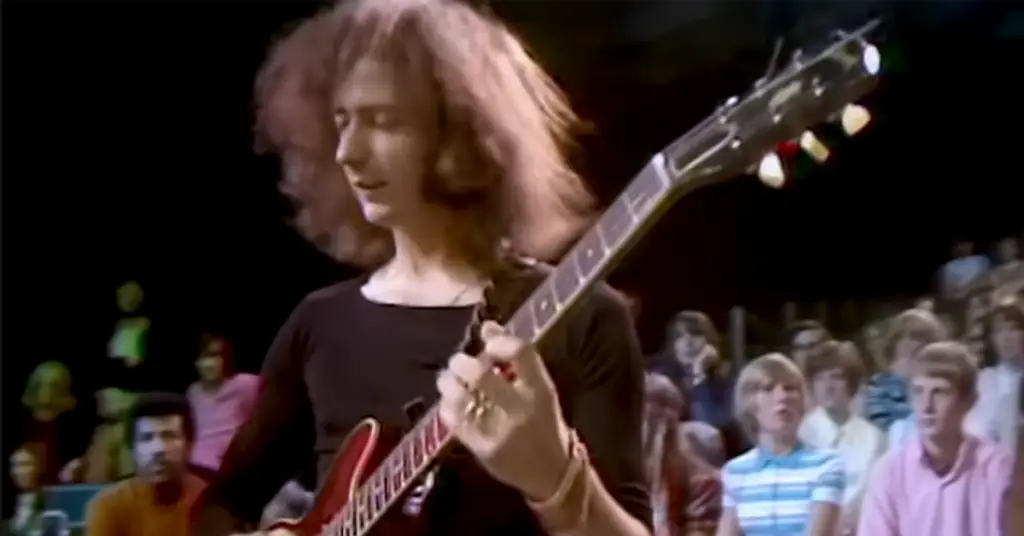Deep Purple – “Wring That Neck”: A Jam-Soaked Firestorm of British Rock
Before “Smoke on the Water” became a global guitar rite of passage, and before Deep Purple firmly staked their claim as founding fathers of heavy metal, they were already turning heads with pure instrumental firepower. Nowhere is that early ambition more explosive than on “Wring That Neck,” the standout instrumental from their 1968 album The Book of Taliesyn.
Bridging psychedelic rock, blues, classical motifs, and proto-metal grit, “Wring That Neck” is a six-minute instrumental blitz that captured Deep Purple in a moment of wild, unfettered musical exploration—before they were headbangers, they were technicians, improvisers, and risk-takers.
The Title: Cheeky and Provocative
In the U.K., the track was boldly titled “Wring That Neck”, but it was retitled “Hard Road” for the U.S. release—likely due to concerns over its violent connotation. Either way, the title fits: the song is muscular, relentless, and neck-snappingly intense.
The Sound: Baroque Battles Meet Blues-Rock Muscle
“Wring That Neck” is built on a tight, chugging bass groove laid down by Nick Simper, over which the rest of the band launches into a series of furious solos, tight riffs, and dynamic shifts.
- Ritchie Blackmore’s guitar leads are razor-sharp, mixing bluesy bends with fast arpeggios and searing runs that show his classical training and wild onstage personality.
- Jon Lord’s Hammond organ doesn’t just accompany—it duels. His solos veer from jazzy flourishes to full-on Bach-like phrases, giving the piece a uniquely baroque-meets-blues feel.
- Ian Paice’s drumming is energetic and responsive, never overplayed, but constantly pushing the tempo with finesse.
The interplay between Blackmore and Lord is the star here. They trade solos like prizefighters, each trying to outdo the other—blurring the lines between improvisation and precision.
The Structure: Jam Band Energy, Classical Control
Unlike typical verse-chorus pop songs, “Wring That Neck” moves more like a live jazz or blues jam, with recurring motifs and dynamic peaks and valleys. The composition allows room for extended solos, tempo changes, and spontaneous interaction, while still feeling cohesive.
The song’s core riff is catchy and propulsive, but it’s the exploration around that central groove that keeps listeners hooked. In many ways, this track was a blueprint for Deep Purple’s live identity: virtuosic, volatile, and constantly evolving.
The Live Legacy: A Showcase of Improvisation
“Wring That Neck” became a live staple for years, particularly during the Mark I and Mark II eras. Onstage, it could stretch well past 10 minutes, with Lord and Blackmore improvising extended duels, often weaving in snippets of classical pieces, folk melodies, or unexpected rock references.
Live renditions—such as those heard on Concerto for Group and Orchestra or Scandinavian Nights—turned the instrumental into a fan-favorite centerpiece, often met with thunderous applause as each solo pushed boundaries.
The Era: Pre-Metal, Post-Psychedelia
Recorded during Deep Purple’s early period—still in their Mark I lineup with Rod Evans on vocals (though absent on this instrumental)—“Wring That Neck” represents a time when the band was finding its sound. You can hear the influences: Cream, The Nice, Hendrix, and the emerging British blues-rock scene.
But even in 1968, you can sense where Deep Purple was headed. The heaviness, the musicianship, the focus on extended solos—it’s all there, waiting to evolve into the metal titans they would soon become.

Final Thoughts
“Wring That Neck” is not just a Deep Purple deep cut—it’s a statement of intent.
It’s the sound of a band flexing its muscles, testing its limits, and tearing up the rulebook of late-’60s rock convention.
No vocals. No compromises. Just riff, organ, rhythm, and fire.
For fans of instrumental rock, progressive fusion, or proto-metal energy, “Wring That Neck” is a must-listen—a six-minute masterclass in how raw talent, chemistry, and fearlessness can electrify a simple riff into something timeless.


Facebook Comments